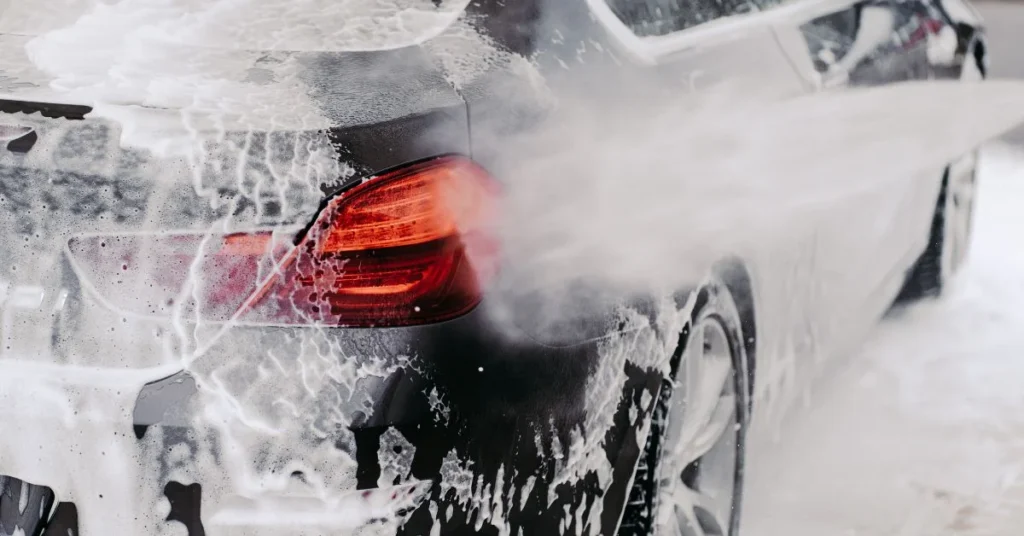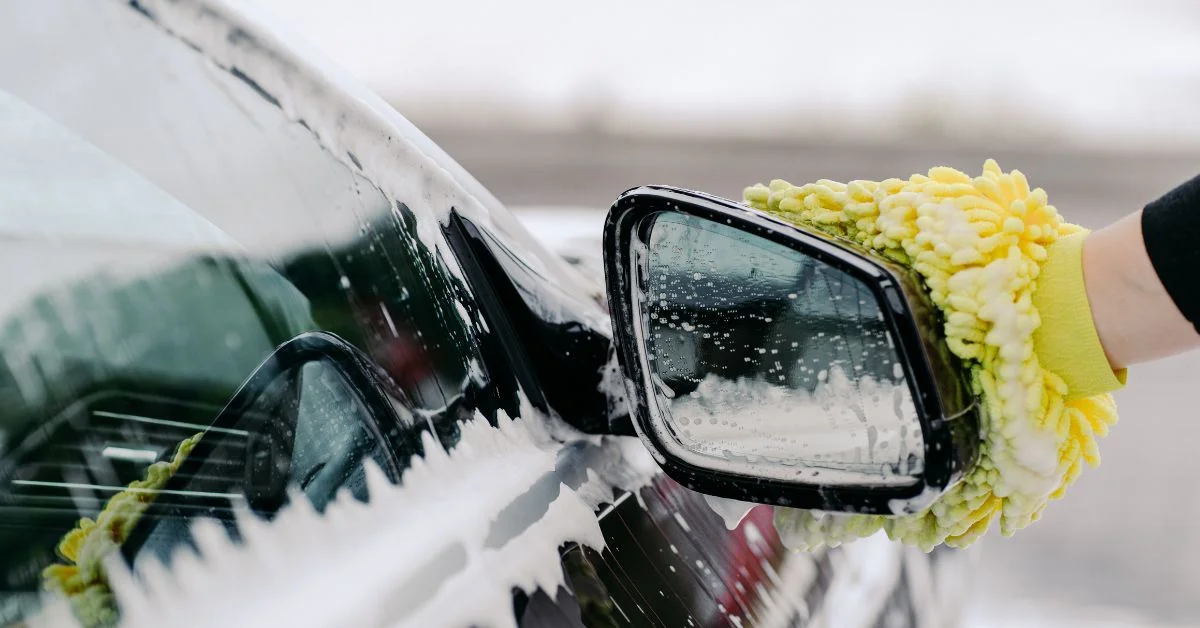For car owners seeking a balance between convenience and care, soft cloth car washes have become a widely used option. But despite their popularity, many drivers are unclear about how they work, what materials are involved, how they compare to other wash methods, and whether they’re genuinely gentle on vehicle surfaces—or just less abrasive than older systems.
This article unpacks everything you need to know about soft cloth car washes in 2025, focusing on how they operate, how they’ve evolved, what to watch out for, and how they compare to touchless or hand-wash alternatives. Whether you’re a weekend car enthusiast or just someone who values a clean vehicle, this is the information you didn’t know you needed.
What Is a Soft Cloth Car Wash?
A soft cloth car wash is an automated car wash system that uses rotating or oscillating strips of cloth—typically made from microfiber or closed-cell foam—to clean a vehicle’s exterior. Unlike traditional bristle brushes, which have been largely phased out due to their tendency to cause scratches, soft cloth washes aim to provide a more gentle contact with the car’s surface.
These systems rely on:
- Lubricating detergents to break down dirt
- Soft, absorbent cloth materials to lift grime off the surface
- Controlled pressure and motion to avoid marring the paint
Soft cloth washes are a middle ground between touchless car washes (which rely only on water and chemicals) and full-service hand washing, offering speed without the risk of harsh abrasives.How the Process Works: Step-by-Step Breakdown
Understanding how a soft cloth wash works helps clarify its advantages—and limitations.
1. Pre-Soak Application
Your vehicle is sprayed with a high-pressure water and detergent mixture to loosen debris and road grime.
2. Foam or Soap Layering
A thick, foamy soap is applied to encapsulate dirt particles, allowing the cloth material to glide without grinding contaminants into the paint.
3. Soft Cloth Passes
Large cloth arms or vertical wraps rotate around the vehicle. These strips are:
- Highly absorbent
- Kept moist throughout the cycle
- Made of materials designed to trap dirt rather than push it around
4. Undercarriage and Wheel Cleaning (Optional)
Some systems offer additional spinning brushes or pressurized jets for wheels and underbody.
5. High-Pressure Rinse
Cleansers and loosened dirt are washed away using deionized or filtered water.
6. Drying Phase
Powerful blowers are used, sometimes assisted by drying cloths, to remove remaining moisture.
The Evolution of Soft Cloth Wash Technology
Earlier generations of automatic car washes used nylon brushes or hard plastic, which often damaged clear coats and paint. In contrast, modern soft cloth washes use:
- Microfiber strips that hold water and soap, minimizing friction
- Closed-cell foam materials that don’t absorb debris
- Anti-microbial fabrics that resist buildup from mold and bacteria
New systems also feature adjustable pressure arms, so the machinery adapts to each vehicle’s contours—reducing blind spots and uneven cleaning.
Some high-end facilities have integrated AI-driven wash controls and sensors that map vehicle dimensions in real time for precision contact and cleaning.
Pros of Soft Cloth Car Washes
Efficient and Time-Saving
A typical wash takes under 10 minutes—ideal for commuters or during inclement weather.
Cost-Effective
At an average cost of $10–$15, soft cloth washes offer a solid return on investment for routine vehicle upkeep.
Safe for Clear Coats (When Maintained)
Unlike outdated brush systems, microfiber cloth is gentle when regularly cleaned and maintained.
Consistent Results
Automation reduces variability in wash quality and ensures a relatively uniform clean across the vehicle.
Environmentally Conscious
Many modern systems recycle up to 80% of their water, making them more eco-friendly than home hose washes.

Cons of Soft Cloth Car Washes
Potential for Micro-Scratches
If cloths are not properly maintained or cleaned, embedded debris can cause swirl marks—especially on dark-colored vehicles.
Inconsistent Maintenance Between Locations
The quality of a soft cloth wash depends significantly on how often the equipment is cleaned and monitored.
Limited Detailing
Soft cloth systems are not designed for precision detailing or bug/tar removal—these still require manual intervention.
Not Touchless
For drivers who want zero contact, soft cloth systems may still feel too invasive compared to touchless wash alternatives.
Soft Cloth vs. Touchless vs. Hand Wash: What’s the Best?
| Feature | Soft Cloth Wash | Touchless Wash | Hand Wash |
|---|---|---|---|
| Time | Fast (5–10 min) | Fast (5–10 min) | Slow (30–60 min) |
| Paint Safety | Moderate (depends on cloth cleanliness) | High | Very High |
| Cleaning Precision | Moderate | Low (struggles with stuck-on debris) | High |
| Cost | Low-Mid | Low-Mid | High |
| Environmental Impact | Low (recycled water) | Moderate | High (at-home water waste) |
Materials Used in Modern Soft Cloth Systems
- Microfiber Cloth: Designed for maximum dirt absorption and minimal friction.
- Neoglide Foam: A closed-cell material that repels water and debris.
- EnviroSoft: A patented cloth that’s both biodegradable and resistant to mildew.
- Closed-Loop Water Filtration Systems: Ensures no debris-laden water is recycled during wash cycles.
Myths and Misconceptions About Soft Cloth Washes
Myth: “All automatic car washes scratch paint.”
Truth: Poorly maintained systems can cause damage, but modern soft cloth washes use advanced materials to reduce that risk dramatically.
Myth: “Touchless is always safer.”
Truth: Touchless washes rely heavily on harsh chemicals to compensate for the lack of contact, which can degrade wax and sealants.
Myth: “You don’t need to wax if you use a soft cloth wash.”
Truth: These washes do not replace protective coatings. You still need to wax or ceramic-coat regularly for long-term paint protection.
Best Practices: How to Use Soft Cloth Washes Safely
- Inspect the facility. Check if the cloths look clean and well-maintained.
- Avoid during pollen-heavy days. Dry pollen can scratch paint when rubbed by cloths.
- Use before waxing. A clean surface is essential before applying any sealant or wax.
- Look for “foam-only” or “lubricated cloth” features. These minimize friction and lower risk of marring.
- Ask about water filtration. The use of softened or deionized water reduces mineral spotting.
Are Soft Cloth Car Washes Safe for Modern Vehicles?
Yes—when operated correctly. Modern vehicles with sensors, cameras, and adaptive lighting are compatible with soft cloth washes, especially at facilities designed with ADAS-safe (Advanced Driver-Assistance Systems) setups. These include:
- Higher-clearance cloth arms
- No-contact zones for mirrors and camera modules
- Wheel guides that accommodate low-profile tires
Environmental Considerations
Many newer facilities employ smart drainage systems and bio-based detergents that break down pollutants without introducing phosphates or harmful surfactants into the ecosystem. By contrast, washing at home allows untreated runoff into local storm drains.
Some car wash operators are certified through programs like:
- WaterSavers® by the International Carwash Association
- LEED certification for environmentally conscious architecture
Is a Monthly Car Wash Membership Worth It?
If you’re someone who:
- Drives daily in dusty or urban environments
- Lives near coastal areas with salt exposure
- Parks outdoors frequently
Then yes—a monthly unlimited plan ($20–$40/month) at a reputable soft cloth wash may be more cost-effective and protective than sporadic cleaning.
These memberships often include perks like:
- Free tire shine or wax applications
- Priority access during busy hours
- Interior vacuum add-ons
Conclusion
A soft cloth car wash offers a balance of efficiency, affordability, and adequate surface care—making it a compelling option for everyday vehicle maintenance. While it’s not as meticulous as a hand wash or as non-invasive as a touchless system, it represents a smart compromise for drivers who want convenience without sacrificing too much on quality.
However, it’s essential to choose your location wisely. The condition of the cloths, the type of soap used, and the system’s maintenance schedule all affect the outcome. As with any tool, effectiveness depends on how—and where—it’s used.
With a basic understanding of how these washes function and what materials are involved, you can make more informed decisions about how to care for your vehicle’s exterior. In the end, consistency, not perfection, is what preserves paint and keeps your car looking its best for years to come.
FAQs
1. Are soft cloth car washes safe for black or dark-colored cars?
Yes, but dark colors show swirl marks more easily. Always inspect the facility and avoid if cloths appear dirty or worn.
2. How often should I use a soft cloth car wash?
Every 1–2 weeks is ideal, especially if driving in dusty, salty, or wet environments. Routine washes prevent long-term damage.
3. Do soft cloth car washes remove wax or sealants?
Most won’t strip quality waxes, but frequent washing can gradually wear down protection. Consider reapplying wax every 2–3 months.
4. Can soft cloth washes clean undercarriages?
Some offer underbody wash options, which are great for removing winter salt and road grime. Ask if it’s included or extra.
5. Is it okay to go through a soft cloth wash with a roof rack or bike mount?
Generally yes, but always check clearance and inform the staff. Some attachments can interfere with machinery.
For more information, click here.









